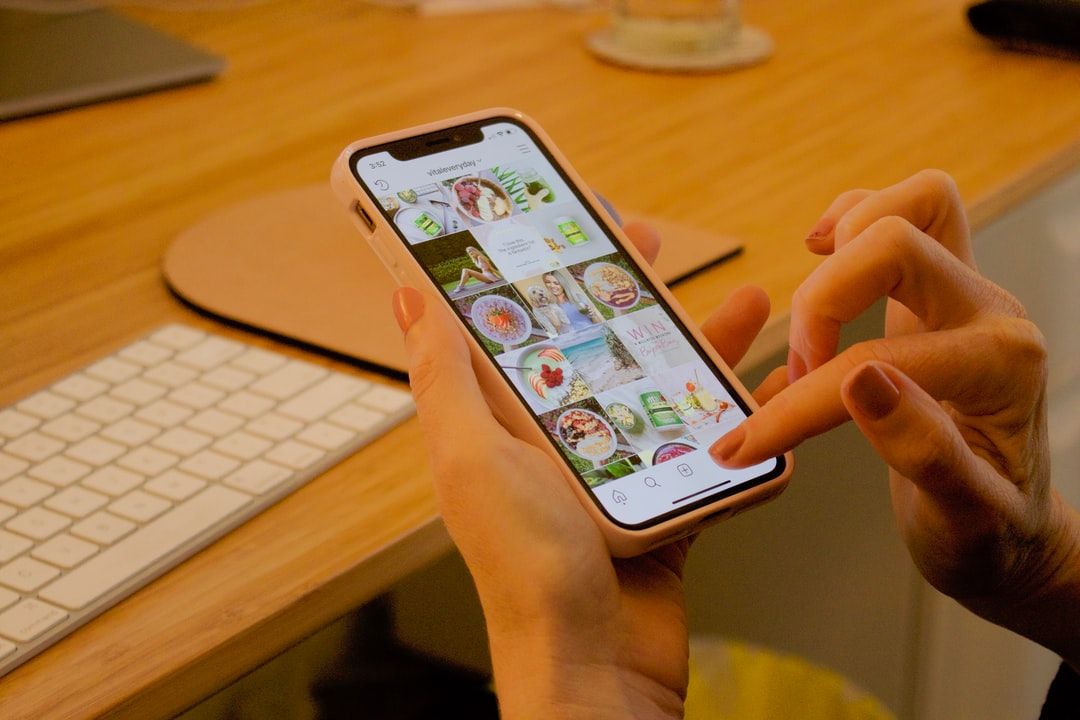Inbound vs. Outbound Marketing: Differences and Strategies
You already know that you need some sort of marketing to reach customers — that’s not exactly groundbreaking news. But picking the right channels can be tricky. You might spend hours trying to figure out whether you should invest in Facebook ads, start a blog, or maybe put your face on a billboard.
Sure, you could theoretically dabble in everything. But that gets expensive, fast.
You may feel tempted to start researching different types of digital marketing. But before you disappear down the Google rabbit hole, take some time to answer a simple question: “Do I want to focus on inbound or outbound marketing?”
Inbound strategies reel potential customers in with quality content. By contrast, outbound marketing broadcasts messages out to your audience.
Both methods can help you connect with customers, but they take drastically different routes to get there. Let’s take a closer look at inbound vs. outbound marketing and when to use each one. We’ll also share some practical advice for your next campaign.
Inbound vs. Outbound Marketing: Key Differences
If you’re new to promoting your business online, you might be wondering, “What is inbound vs. outbound marketing?” Here’s a quick summary:
| Inbound Marketing | Outbound Marketing | |
|---|---|---|
| Approach | Attracts interested customers with relevant content | Actively seeks customers out to share a message |
| Focus | Developing long-term relationships and establishing your business’s authority | Building brand awareness and generating new leads |
| Examples | Content marketing, Newsletters, Social Media posts | Billboards, Direct Mail, Radio Jingles |
| Cost | Includes many affordable strategies, such as email marketing and posting organic content on Facebook | Typically more expensive |
| Lead Quality | High — leads decide to engage with your content by themselves | Low — many people who see your message won’t be interested |
| Speed of Results | May take months or years to build an audience | Can quickly appeal to lots of new customers |
| Customer Engagement | Clients self-select, so they’re usually more invested from the get-go | Lower because you’re interacting with people who haven’t already sought you out |
| Measurability | Easy to measure with metrics like Facebook likes and web traffic | Not always easy to measure directly |
| Scalability | Takes time to produce more content | Can quickly scale up with more ad spend |
Inbound Marketing Explained
Think of inbound marketing as a fishing expedition. You create delicious bait — aka top-notch online content — that brings customers to you organically. People who aren’t interested in your brand will keep swimming past it, so you end up reeling in only the highest-quality leads.
Businesses often use these inbound marketing tactics:
- Content marketing, such as how-to guides and videos
- Email marketing
- Organic social media posts
- Search engine optimization (SEO)
- Webinars
Inbound marketing is an accessible and cost-effective digital marketing strategy. For example, all you need to start creating Facebook posts is a smartphone and a little editing knowledge. With consistent effort, this approach can help you grow a loyal audience that values your expertise.
However, this method also comes with a few challenges. It’s slow — fishing takes patience, after all. And you can’t slack off. Abandon your blog or Facebook account for a few months, and you risk losing your visibility.
Outbound Marketing Explained
To stick with the fishing metaphor, outbound marketing is like chucking all of your bait into the water at once and trying to scoop whatever surfaces into your net. You might land a few prize catches right away, but you’ll also have to throw back a lot of fish who just aren’t interested in your brand.
Here are a few popular outbound methods:
- Affiliate marketing
- Billboards
- Cold calls
- Press releases
- Television commercials
- Trade shows
Outbound marketing strategies can help you connect with leads who might never stumble across your brand by themselves. For instance, a customer may not even realize hybrid conversion kits exist until they see them at your trade show booth. Even if you have the top-ranking blog posts on this topic, they wouldn’t have discovered them — because they were never looking for that content in the first place.
This approach is hard work, though. It takes a lot of time to chase leads and create commercials that people actually want to watch. And if you come on too strong, you might just annoy some potential customers instead of impressing them.
Strategies for Effective Inbound Marketing
Fishing may look deceptively easy, but it’s an art form. True masters can read the water and know exactly which bait to use to catch their targets. Inbound marketing is the same. If you want to hook members of your target audience, you need to know where they are and what they care about.
Use these tactics to develop winning inbound marketing campaigns:
- Create valuable content: Customers are more complex than fish, of course, but they still have specific interests. Use tools like surveys to learn about your audience and develop content people actually need. For instance, potential customers shopping for electric vehicles might be curious about the maintenance requirements.
- Leverage SEO and social media: You don’t need to wait for customers to come across your content on their own. Boost its visibility with relevant keywords, such as “best auto shop in Tampa” or “affordable brake repair.”
- Build customer relationships: An inbound marketing strategy works best when you take the time to nurture those new connections. Simple strategies like responding to comments on your Facebook posts don’t take much time but leave an impression.
Strategies for Effective Outbound Marketing
An effective outbound strategy strikes a delicate balance — direct but not too aggressive. Set yourself up for success with these best practices:
- Craft compelling ads: With the rise of TikTok and other short-form video platforms, many people have shorter attention spans. Use visual storytelling to hook them in the first few seconds. Take Jaguar’s “Copy Nothing” commercial, for instance. The actors’ stunning yellow and orange outfits immediately catch the viewer’s eye, while intriguing phrases like “create exuberant” leave them wondering what will happen next.
- Use direct outreach: Nothing builds personal connections like a phone call or face-to-face meeting. Use this outreach to humanize your brand and develop long-term relationships.
- Optimize trade shows: Attend a few industry events every year so you can shake hands and win over customers in person. As you become a more familiar presence, you’ll build brand awareness.
Integrating Inbound and Outbound Strategies
Still can’t decide between inbound vs. outbound marketing for B2B clients? The great news is that you don’t have to choose. Many businesses take a hybrid approach to engage as many people as possible.
Here are a few benefits of combining these strategies:
- You can reach a much broader audience, from casual online browsers to hobbyists at trade shows.
- It lets you tailor your methods for different customers. Older clients may prefer direct mail, while Gen Z loves to engage on social media.
- You get the best of both worlds — quick leads and sustainable, long-term growth.
Set yourself up for success with these best practices:
- Create brand guidelines to help maintain a consistent voice across channels.
- Get expert help by hiring a digital marketing agency to help you plan out your integrated marketing campaigns.
- Use data analytics tools to see what’s working and what’s not worth the investment.
- Keep your content fresh by following the latest digital marketing service trends.
Consider researching inbound vs. outbound marketing examples for inspiration, too. For instance, Progressive uses a combination of inbound and outbound marketing tactics to promote its insurance products. Its blog features helpful articles on everything from how to anchor a boat to defensive driving tips. This inbound content engages people searching for advice online.
Of course, the company is most famous for its dryly funny commercials. In “Dr. Rick,” for example, a self-help coach tries to protect his clients from "parentamorphosis" — turning into their parents. This ad appears on several outbound marketing channels, including social media and television.
Choosing the Right Strategy for Your Business
Inbound vs. outbound marketing is a timeless conundrum for all businesses. Really, it all comes down to your goals and audience. Some marketers love wooing customers with cold calls and shaking hands at trade shows. Others prefer to provide value with content marketing and other inbound approaches.
Optimize can help you develop the perfect strategy for your business. Schedule your free consultation today.
View Our Latest Posts



